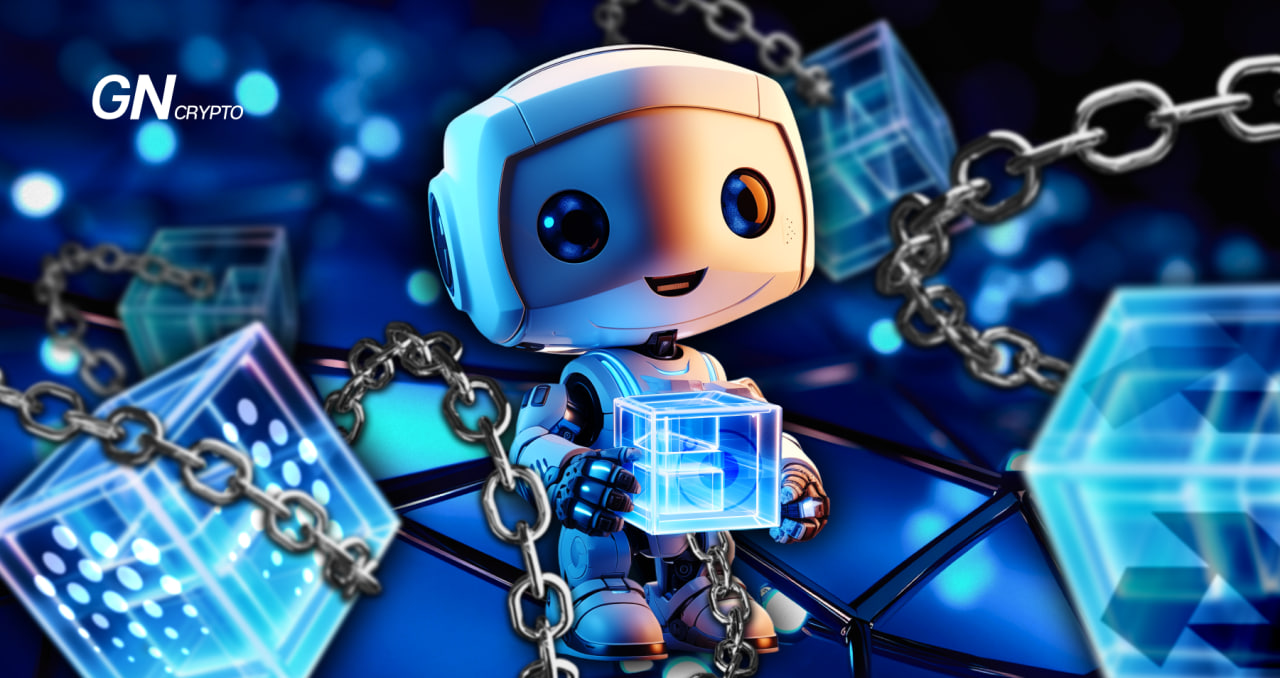5 Best AI Cryptocurrencies: The Intersection of AI and Blockchain

AI cryptocurrencies are assets that empower projects intertwined with artificial intelligence. They serve various purposes, including portfolio management, image generation, and information retrieval. These tokens enable owners to engage in project development and cover platform service fees.
On this page
This article introduces you to the most notable blockchain projects in the AI sector, selected based on their market capitalization and project orientation
Bittensor (TAO)
Bittensor is a decentralized network designed for the interconnection of machine learning (ML) models, akin to a brain where “neurons” are ML models owned by users globally. These models collaborate, processing information and learning to generate required outcomes.
The Bittensor blockchain is built using Substrate, a technology that also underlies Polkadot. It offers a modular structure, enabling the creation of customizable blockchains (appchains).
TAO, Bittensor's native token, plays multiple roles within its ecosystem, including:
- Staking: Bittensor uses a Proof-of-Stake consensus algorithm, so validators must stake a portion of TAO tokens to confirm transactions.
- Governance: TAO holders can participate in protocol upgrades through a voting process.
- Fees: Users incur fees to encourage network activity.
According to CoinGecko, Bittensor ranks first among the AI-based blockchain projects. In January 2024, its market capitalization was $2.7 billion, 1.5 times more than its closest competitor.
Render Network (RNDR)
Render Network is a decentralized platform for rendering digital content, spanning images, videos, animations, and AI-driven projects. It leverages the untapped efficiency of GPU (graphics processing units), offering a computational power rental solution.
Render's mission is to bridge users in need of substantial GPU power with those whose GPUs are underutilized, reminiscent of Filecoin's data storage model, though Render reallocates computational power instead.
How Render Network Works. Source: rendernetwork.com
Components of the Render Network:
- Creators: Clients who leverage Render Network's computational resources for specific tasks, which are then allocated across nodes.
- Node Operators: Contributors to the Render Network who offer their GPU power in exchange for RNDR tokens.
- OctaneRender: A GPU rendering software.
- OctaneBench: Evaluates a node's computational capacity, influencing pricing based on speed, security, and node reputation.
- RNDR Credits: A streamlined method for purchasing services on the Render Network, purchasable via PayPal and Stripe, with value backed by the RNDR tokens held by the team.
RNDR tokens are operational on Ethereum, Polygon, and Solana blockchains. They facilitate the payment for computational power rentals and follow a deflationary model. Further details on RNDR's economic metrics and project intricacies can be explored in this article.
Ocean Protocol (OCEAN)
Ocean Protocol is designed for monetizing artificial intelligence models and data. It operates on the principle of converting data into ERC-20 assets within the Ethereum network, allowing stakeholders to purchase datasets for training machine learning models, analytics, and more.
Data providers list their tokens on the Ocean Market, where they can be purchased by others. The value of these tokens is regulated by an Automated Market Maker (AMM), which sets the asset's price based on its ratio to OCEAN tokens within the liquidity pool.
The OCEAN token, integral to Ocean Protocol, serves as both a medium of exchange and a tool for project governance through voting. Users can also stake OCEAN in the liquidity pool for potential rewards. There's a total supply of 1.4 billion OCEAN tokens, with 591 million already circulating.
Fetch.ai (FET)
Fetch.ai is a decentralized platform that uses artificial intelligence to automate a variety of tasks. Its core functionality is driven by AI agents — snippets of computer code that act on behalf of users to interact with applications.
AI agents represent software entities capable of performing specific tasks for their owners. For instance, to book a flight, a user's AI agent would “talk” to the airline's AI agent.
These agents can also learn from the actions of other agents. For example, planning a vacation similar to a colleague's without inquiring about the details is possible as your AI agent learns from and emulates your colleague's agent's actions.
Fetch.ai Components. Source: fetch.ai
Key Components of Fetch.ai:
- Agentverse: A platform for the creation, registration, and management of AI agents.
- DeltaV: A chat interface that connects users with AI agents, making it easier to engage with agents and presenting services in a human-readable way.
- AI Engine: Processes the user's request into an AI task and selects the appropriate AI agent for it.
FET, Fetch.ai's native token, is utilized to pay for the platform's services. Users can stake FET to engage in decision-making about the project's direction.
Akash Network (AKT)
Akash is a decentralized cloud computing platform developed using the Cosmos SDK and integrated within the Cosmos ecosystem. It enables users to lease out computational resources and provide cloud services to other participants in the network.
The Akash blockchain is governed by a Delegated Proof of Stake (DPoS) consensus mechanism, involving:
- Validators: Responsible for creating new blocks by voting with AKT tokens received from delegates.
- Delegates: Allocate their AKT to preferred validators, based on the platform's displayed information.
AKT is Akash Network's utility token, facilitating network governance, blockchain security, participant incentives, and the exchange of value (such as renting out and supplying computational power).
The content on The Coinomist is for informational purposes only and should not be interpreted as financial advice. While we strive to provide accurate and up-to-date information, we do not guarantee the accuracy, completeness, or reliability of any content. Neither we accept liability for any errors or omissions in the information provided or for any financial losses incurred as a result of relying on this information. Actions based on this content are at your own risk. Always do your own research and consult a professional. See our Terms, Privacy Policy, and Disclaimers for more details.



























